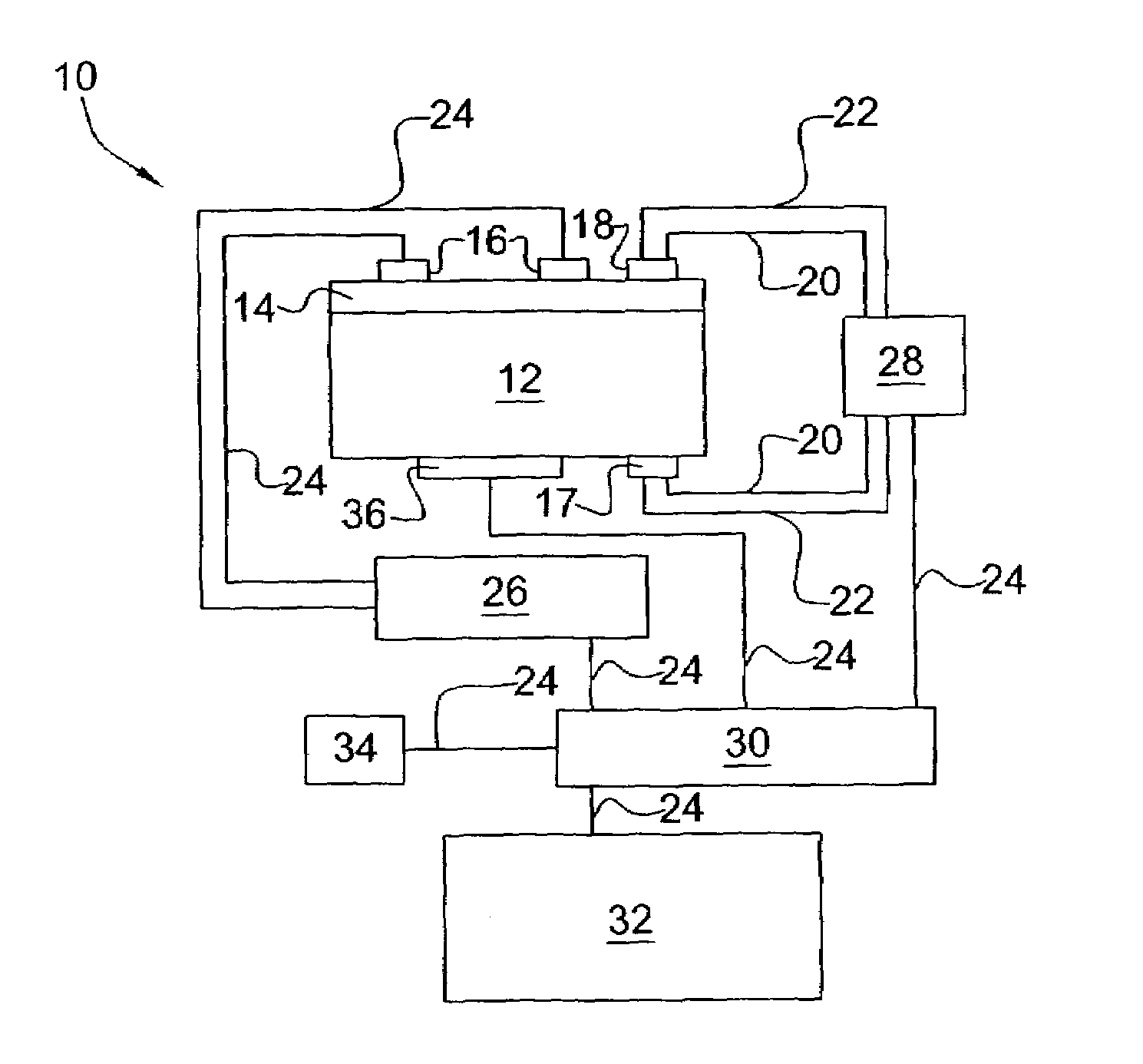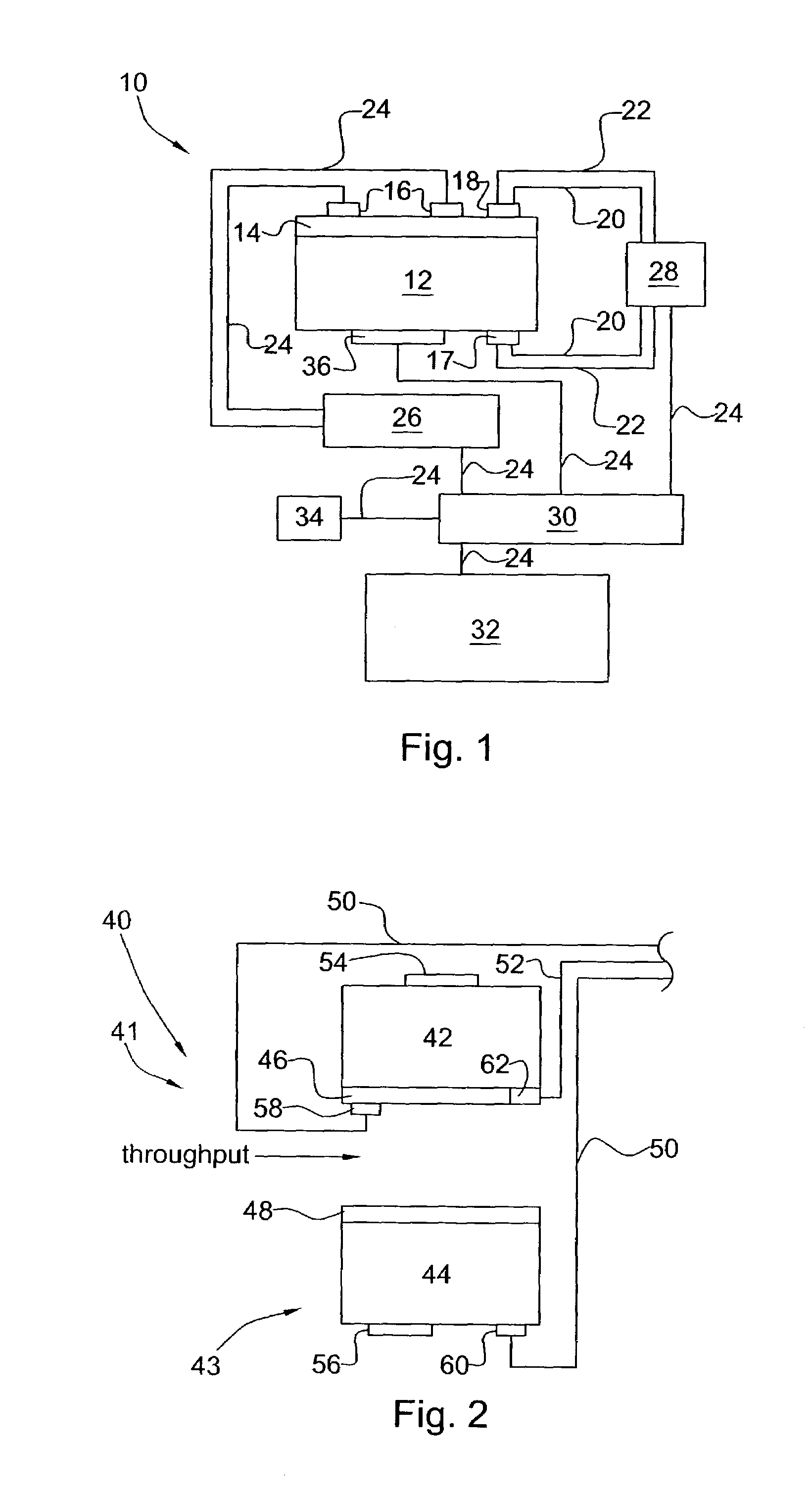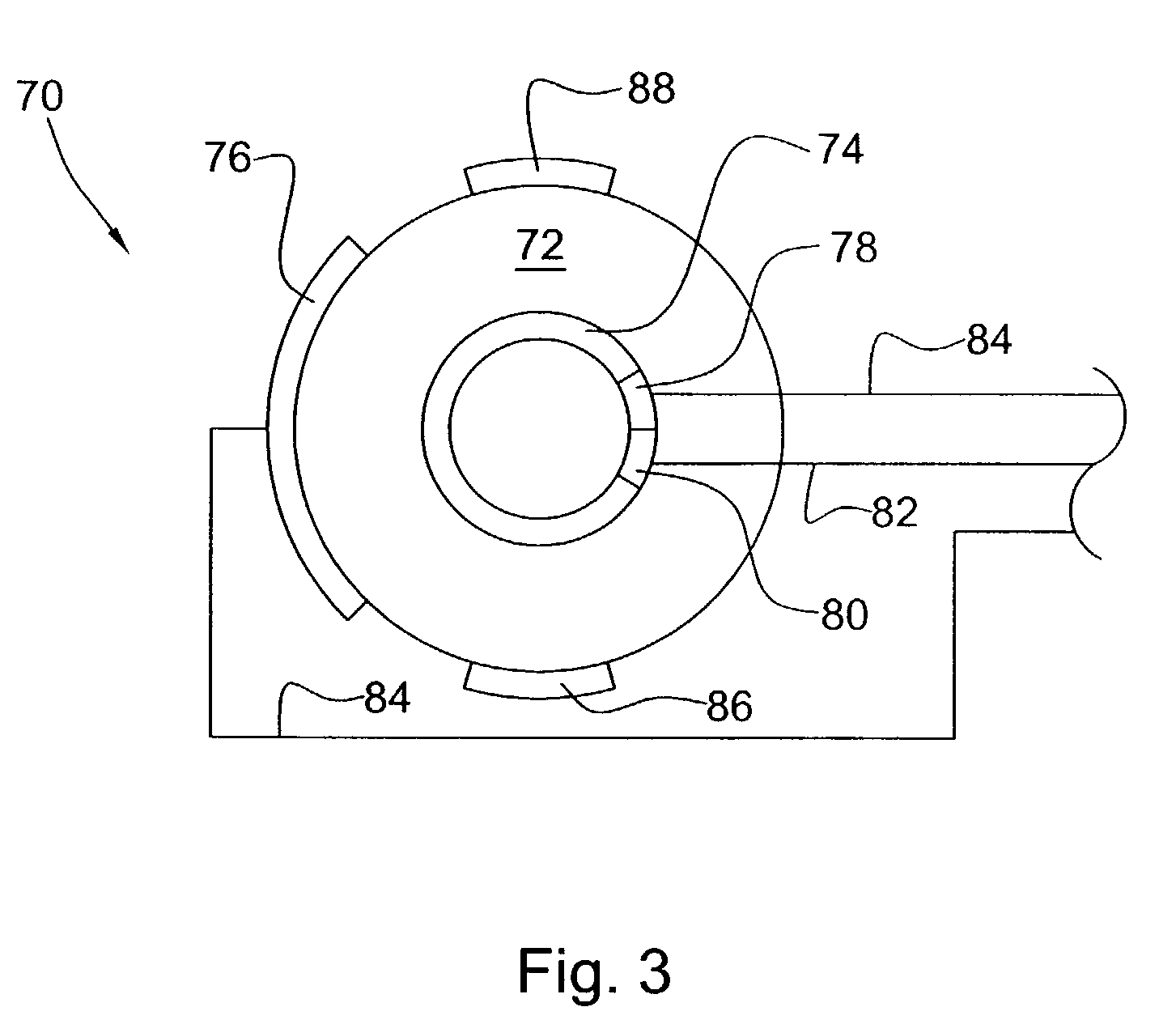Control system for catalytic processes
a control system and catalytic technology, applied in the direction of machines/engines, hydrogen isotopes, bulk chemical production, etc., can solve the problems of carbon monoxide interference with the catalytic mechanism, poisoning of catalysts, carbon deposition,
- Summary
- Abstract
- Description
- Claims
- Application Information
AI Technical Summary
Benefits of technology
Problems solved by technology
Method used
Image
Examples
Embodiment Construction
[0019]It was surprisingly found that there could be an in situ means for controlling and maintaining the effectiveness of a catalyst system. It was also surprisingly found that there could be such a system for controlling and maintaining the effectiveness of a catalyst system in a process for reforming hydrocarbon streams and for pollution remediation of combustion exhaust streams.
[0020]The present invention provides an in situ means for detecting the level of poisoning in a catalyst and means for maintaining precise control of the application of a DC electric field and, optionally, heat (temperature) thereto. Catalyzed reaction conditions can be optimized for maximum conversion of reactant chemical species and / or selection of certain reaction pathways and products. The DC current can be set to maximize the number of catalytically effective sites in the catalyst, if desired. The reaction temperature of the catalyzed reaction can be set to maximize reaction rate and / or select certain...
PUM
| Property | Measurement | Unit |
|---|---|---|
| temperature | aaaaa | aaaaa |
| frequencies | aaaaa | aaaaa |
| frequencies | aaaaa | aaaaa |
Abstract
Description
Claims
Application Information
 Login to View More
Login to View More - R&D
- Intellectual Property
- Life Sciences
- Materials
- Tech Scout
- Unparalleled Data Quality
- Higher Quality Content
- 60% Fewer Hallucinations
Browse by: Latest US Patents, China's latest patents, Technical Efficacy Thesaurus, Application Domain, Technology Topic, Popular Technical Reports.
© 2025 PatSnap. All rights reserved.Legal|Privacy policy|Modern Slavery Act Transparency Statement|Sitemap|About US| Contact US: help@patsnap.com



